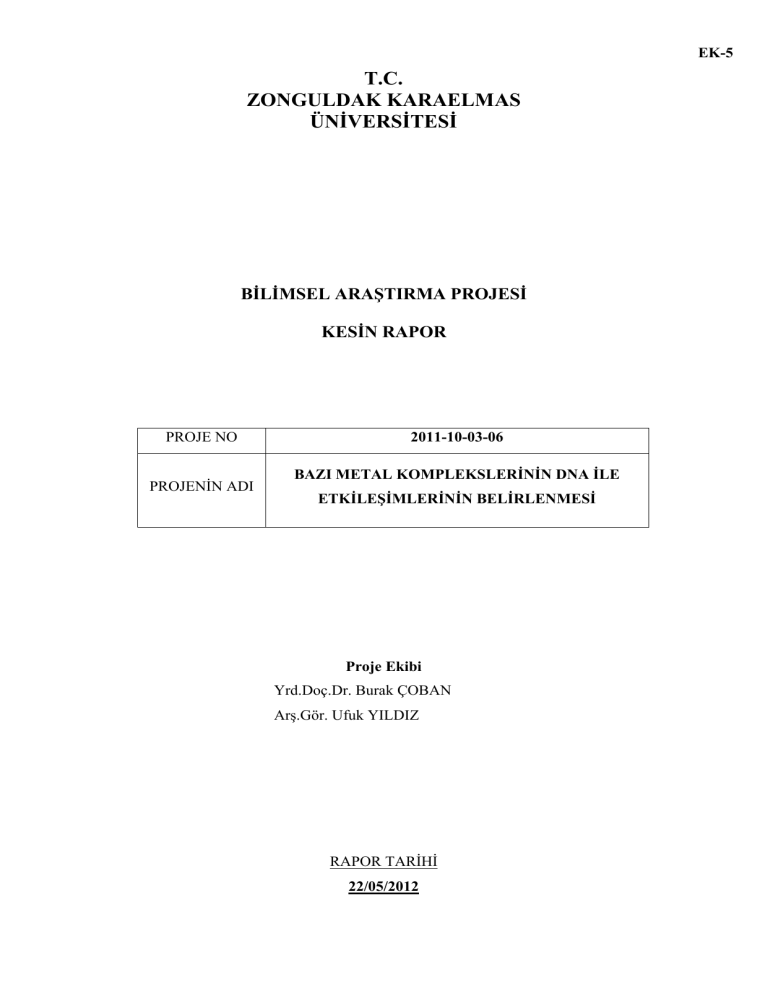tc zonguldak karaelmas üni̇versi̇tesi̇
advertisement

EK-5 T.C. ZONGULDAK KARAELMAS ÜNİVERSİTESİ BİLİMSEL ARAŞTIRMA PROJESİ KESİN RAPOR PROJE NO PROJENİN ADI 2011-10-03-06 BAZI METAL KOMPLEKSLERİNİN DNA İLE ETKİLEŞİMLERİNİN BELİRLENMESİ Proje Ekibi Yrd.Doç.Dr. Burak ÇOBAN Arş.Gör. Ufuk YILDIZ RAPOR TARİHİ 22/05/2012 ABSTRACT In this work the synthesis of 1,10-phenanthroline based ligands bearing imidazole ring and their corresponding transition metal complexes and DNA interactions of these complexes were studied. 2-phenylimidazo[4,5-f][1,10]phenanthroline (PIP) and 2-(2-hydroxyphenyl)imidazo[4,5- f][1,10]phenanthroline (HPIP) ligands were synthesized starting from 1,10-phenanthroline5,6-dion. (2,2′-bipyridine)2-phenylimidazo[4,5-f][1,10]phenanthroline)Platinium(II) ([Pt(bpy) (PIP)]+2) and (2,2′-bipyridine)2-(2-hydroxyphenyl)imidazo[4,5-f][1,10]phenanthroline Platinium(II) ([Pt(bpy)(HPIP)]+2) complexes were obtained from ligands. The ligands were characterized by using FT-IR and H-NMR. Complexes were characterized by using ESI-MS and H-NMR analysis. DNA interactions of complexes were determined by UV titration, agarose gel electrophoresis, fluorometer and viscosimeter methods. UV titration studies suggest that [Pt(bpy)(HPIP)]+2 interacts with DNA stronger than the other complex. Electrophoresis and viscosity studies support the UV titration results. As expected the binding constant of [Pt(bpy)(HPIP)]+2 was lower than [Pt(bpy)(HPIP)]+2 complex’s binding constant in only fluorometer studies because of structure of [Pt(bpy)(HPIP)]+2. All of the results suggest that both of the complexes intercalates in DNA base pairs.